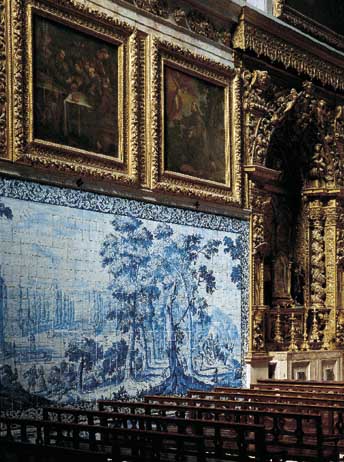|
|
|
|
|
|
|
|
|
|
 |
|
|
|
|
|
|
|
|
 |
|
|
|
|
|
|
|
The XVII · XVIII Centuries
Works ordered
from Holland
|
 ver a period of nearly fifty years beginning in the last quarter of the XVII century, Portugal imported a number of monumental sets of tiles from the Low Countries. ver a period of nearly fifty years beginning in the last quarter of the XVII century, Portugal imported a number of monumental sets of tiles from the Low Countries.
The Dutch tiles were conceived by qualified painters such as Willem van der Kloet and Jan van Oort, and both their technical superiority and blue paintings (inspired by Chinese porcelain) were to the taste of the Portuguese market. The Dutch manufacturers also contributed to their success by adapting their work to Portuguese preferences and creating monumental works.
These imports forced the Portuguese producers to react and employ painters with an academic training, thus responding to the needs of an ever more demanding clientele. Thanks to the quality of the new Portuguese tiles, the temptation to import faded away naturally and the last major order from Holland was delivered in 1715.
Besides these large figurative panels, the Low Countries also exported more ordinary tiles known as "single figures", each of which portrayed an autonomous scene. They represented an intimate style which particularly appealed to Dutch tastes, but in Portugal they were employed in accordance with local tradition, with frames painted onto the tiles themselves.
|
|
|
|
"Madre de Deus" Church,
Lisbon, c. 1700.
photograph: Nicolas Lemonnier
|
|
|
|
|
|
 |
|
 |
|
|
|
|
|
|
The Panel Room,
Fronteira Palace, c. 1670.
photograph: Nicolas Lemonnier
|
|
|
|
|
 |
|
|
"Madre de Deus" Church,
Lisbon, c. 1700.
photograph: Nicolas Lemonnier
|
|
|
|
|
|
|
© Instituto Camões, 2000
|
|
|